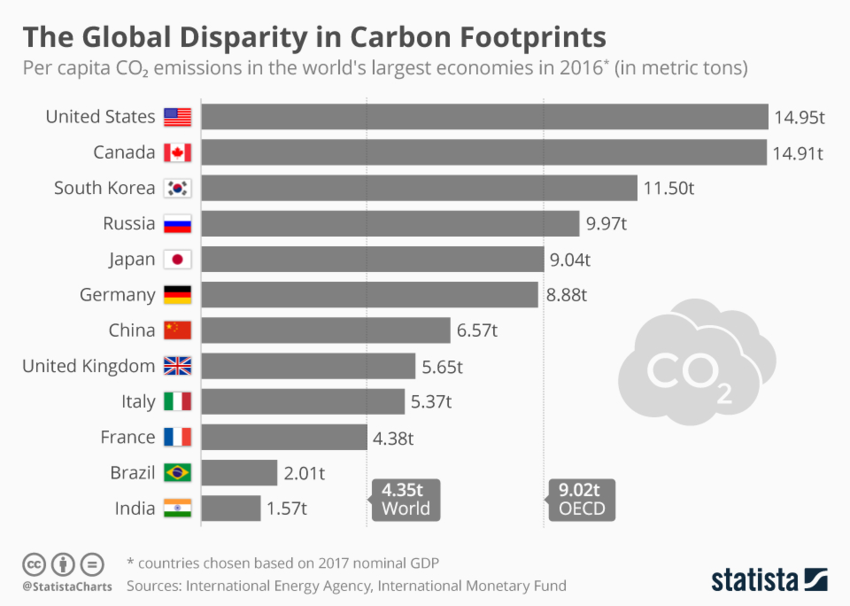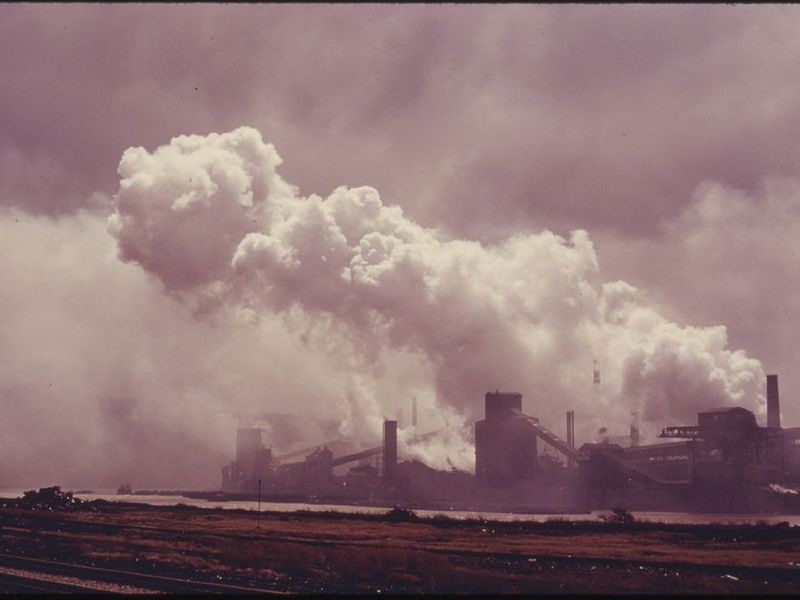The USA is now the first country to pull out of the Paris agreement. This has opened the revolving door of denialism while we are stuck in a state of climate emergency. The deal is now in the hands of the rest of the European and Chinese signatories. While the former along with the Middle East have the highest per capita Carbon emissions in the world (as shown below) the latter has had a massive industrial boom to carve a sizable chunk of Carbon emissions today. These are the facts. Where does this leave us in our fight against climate change? Who should shoulder the responsibility of trimming down their economy to bring down our dear planet’s rising fever?

In this article, I am going to ignore the elephant in the room- USA. I am brewing arguments for and against the environment-friendly Europeans as well as the emerging Asians. As an Indian living in Europe I can understand the different viewpoints that may emerge amongst the climate discussions between the emerging and developed economies. There is a need to understand both perspectives in order to reach a solution as the blame game will get us nowhere.
To understand the European side of the story, we may have to go for a stroll down the memory lane. Back in the early days of the industrial revolution, England and Germany gave birth to several cities in such a short span of time that there was no planning whatsoever and chaos ensued. The pollution-limiting clean air laws were passed left and right, yet they had little teeth as the growth was far beyond the government’s control. It took these countries roughly two centuries to address their pollution problems. The world had known about global warming since early 20th century but considered it as an ally rather than a foe, especially in the colder regions of the Northern Europe. One can say that the public became aware of the grim reality about 30 years ago with the establishment of the Intergovernmental Panel on Climate Change.
Ever since then, the Europeans have had strict regulations for a healthy environment for their people. They had the wealth and stability to pursue laws that would cripple industrial activities in the area and transfer the headaches of low-cost production to the East. Meanwhile the rest of the world had just found sovereignty from Europe’s colonial superpowers. These countries were on an explosive trajectory in terms of industrialisation and urbanisation. I would like to specifically mention two of these countries- India and China.

The economic giants of the 21st century live in the backyards of these two countries as they foster development with the help of their own economic models in the digital age of globalisation. The rapid urbanisation and strong industrial growth point to a much larger carbon footprint from the region in the 21st century as compared to the accumulated footprints of the Europeans over the past century. The public in these countries aren’t necessarily worried about their impact on climate change as they are yet to reach economic stability. They are mere pawns in the race to secure a better life for their offspring by realising opportunities that were not accessible to the previous generations.
But with the deepening of the environmental crisis and stark warnings of imminent disasters that spare no one, there is no more room for economic growth without adversely affecting the climate. If you ask me, there are two options in front of the world- either halt the current growth trajectory wherein the emerging countries are stuck in a world of unemployment and chronic poverty or sacrifice the Western assets to offset the growth so that the developing parts of the world may continue their growth in a limited manner to cope with the internal migration from rural areas to urban centres. For example, India needs a growth rate of 7.5% to limit unemployment and the figures are similar for many other countries around the world. Either way, I do not think that it is possible to combat climate change in the current mode of Capitalism as it is simply feeding the “invisible hand” of the richest 1%. In a totally unrelated note, I support Warren’s plan for wealth tax but I believe the US should spend the revenue on their green new deal instead of the bloated healthcare- a topic for another day.
So how can we reduce our footprint? I am running a side project of building an app to help measure one’s own Carbon footprint scientifically and offset them by donating to afforestation projects around the world. You may also have a look at my article on leading a sustainable life. The reason I decided to present the per capita CO2 emissions chart (shown above) is because at the end of the day, it comes down to each of us to evaluate our footprint and work towards a sustainable future.